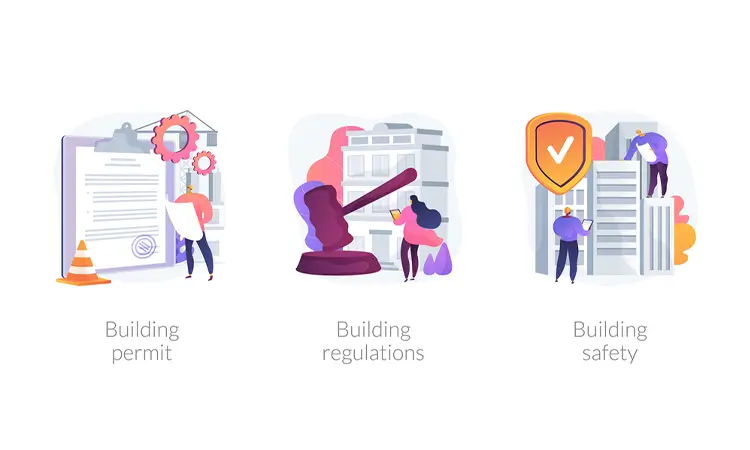Building Regulations: What Homeowners Must Understand
If you’re planning a home renovation, extension, or new build in the UK, understanding building regulations is essential. These legal requirements ensure that buildings are safe, energy- efficient, and accessible. Whether you’re adding a loft, extending your kitchen, or building from the ground up, non-compliance can lead to costly delays or even demolition orders.
At Buildrite, we help homeowners across the UK navigate every aspect of building regulations with confidence and ease. In this guide, we break down what building regulations are, how they differ from planning permission, and how you can ensure compliance in your next project.
What Are Building Regulations?
Building regulations are a set of statutory requirements designed to ensure the health, safety, and welfare of people in and around buildings. These regulations also promote sustainable building practices and energy efficiency.
Unlike planning permission, which focuses on external aesthetics and land use, building regulations address the technical and structural integrity of a building project. In England and Wales, these rules are enforced by local authorities or private building control inspectors.
Key goals of building regulations include:
- Preventing structural failure
- Reducing fire risks
- Improving energy efficiency
- Ensuring accessibility and ventilation
- Promoting safety in electrical and plumbing work
If you’re carrying out construction, alteration, or demolition, you’ll likely need to comply with relevant building regulations.
Key Areas Covered by Building Regulations
The UK building regulations are divided into several parts (referred to as “Approved Documents”), each covering specific areas of construction and renovation.
1. Structure (Part A)
This ensures the building can withstand load and pressure from occupancy, weather, and natural forces. It covers foundations, floors, walls, and roofs.
2. Fire Safety (Part B)
One of the most critical sections, this sets requirements for fire exits, smoke alarms, fire doors, and escape routes.
3. Ventilation (Part F)
Proper airflow is crucial for maintaining indoor air quality and reducing condensation or mould. This applies to bathrooms, kitchens, and all habitable rooms.
4. Insulation & Energy Efficiency (Part L)
These rules ensure your home is energy-efficient, with requirements for wall, roof, and floor insulation, as well as heating systems and glazing.
5. Electrical Safety (Part P)
Any electrical installation in a home must meet safety standards. Only certified electricians or Competent Persons should carry out this work.
6. Accessibility (Part M)
This ensures homes are accessible to people with disabilities, with specifications for door widths, bathroom layouts, and stairs.
Other important areas include sound insulation (Part E), drainage (Part H), and glazing safety (Part N).
How to Ensure Compliance
Navigating building regulations might seem daunting, but with the right guidance and planning, it becomes straightforward.
Step-by-Step Compliance Process:
1. Hire a Professional
Engage an architectural designer or technician who understands the intricacies of UK building regulations. At Buildrite, our in-house experts ensure that your drawings and construction plans meet all necessary standards from the outset.
2. Submit Building Control Applications
There are two types:
- Full Plans Application: Submit detailed drawings for approval before
- Building Notice: Simpler, used for small-scale projects, but no pre-approval is given—only inspections during the build.
3. Get Inspections at Key Stages
A building control inspector (either from the local authority or private sector) will visit your site at various stages:
- Foundations
- Structural framework
- Insulation installation
- Final completion
4. Obtain a Completion Certificate
Once your project meets all regulations, you’ll receive a Building Regulations Completion Certificate—a crucial document for resale, mortgages, and future renovations.
Consequences of Non-Compliance
Ignoring or failing to meet building regulations can have serious repercussions. These include:
- Legal Action: Local authorities can issue enforcement notices or require demolition of non-compliant structures.
- Insurance Issues: Claims may be denied if the property doesn’t meet building
- Reduced Property Value: Potential buyers or mortgage lenders often request building control certificates.
- Increased Costs: Fixing problems later is more expensive than doing it right from the
At Buildrite, we priorities compliance from day one, saving our clients from costly setbacks and legal complications.
How Buildrite Makes It Easy
As trusted professionals in UK residential architecture, Buildrite offers comprehensive support throughout your project’s lifecycle, ensuring seamless compliance with all building regulations.
Our Building Regulations Services Include:
– Detailed Architectural Drawings
Our plans include everything required for approval, from structural layouts to insulation specs.
– Liaison with Local Authorities
We handle communication with building control officers, ensuring all questions and requirements are addressed promptly.
– Technical Support
Our team works alongside your contractors to resolve any on-site compliance issues.
– Design Revisions if Needed
Should regulations change mid-project, we quickly revise your designs to keep things moving.
We work hard to ensure that every Buildrite project passes inspection the first time—saving you time, stress, and money.
Let Us Handle Your Building Regulations Drawings
Don’t let complex rules slow down your project. At Buildrite, we create fully compliant building regulations drawings tailored to your extension, renovation, or new build. We take the stress
off your shoulders and ensure everything is up to code.
Contact us now for a free quote on your building regulations package and start your project with confidence.





